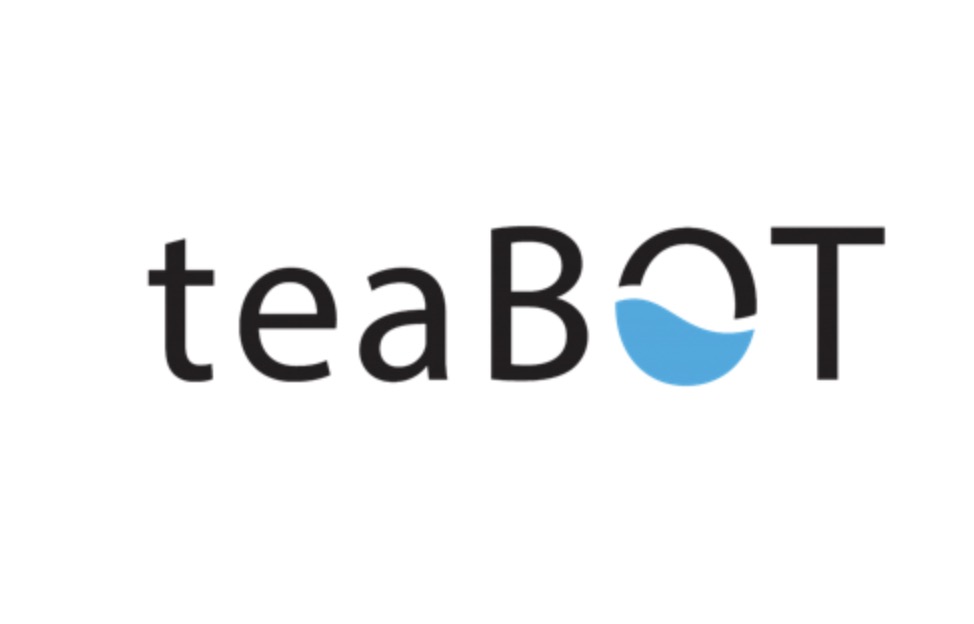TeaBOT Revolution: How Your Next Cup of Tea Could Be Brewed by AI
TeaBOT is a term that might conjure up cozy images of a personal robot preparing a hot cup of tea. However, it’s quite the opposite in the world of cybersecurity.
TeaBOT is a sophisticated piece of Android malware designed to infiltrate banking and financial applications, stealing sensitive information from unsuspecting users.
It first emerged in 2021, displaying an alarming ability to bypass the security measures of the Google Play Store and target a broad range of financial applications across various regions, including Europe, Russia, and the United States.
Once inside a user’s device, TeaBOT sets to work obtaining credentials and intercepting SMS messages, often used for two-factor authentication.
What makes TeaBOT particularly concerning is its evolution; over time, it has developed new strategies for distribution and infection.
Initially spread through “smishing” or phishing via SMS, TeaBOT now also includes fake updates in official app stores as a method to deceive users and gain unauthorized access to their personal and financial data.
Key Takeaways
- TeaBOT is an Android trojan malware targeting financial apps to steal sensitive data.
- It has evolved to bypass Google Play’s security and employs various infection methodologies.
- Protecting against such threats requires awareness and robust cybersecurity measures.
Overview of TeaBOT
TeaBOT is a pernicious entity in the digital world, primarily targeting Android devices with the sole purpose of committing financial fraud. It crept its way onto innocent users’ devices disguised as legitimate applications, unraveling its malicious intents over time.
Origin and Evolution
Origin: Incepted in 2021, TeaBOT began as an Android banking trojan, which initially seemed to be in its nascent stage of development.
Its crafters employed socially-engineered smishing to propagate their malware, camouflaging it within commonly used applications.
Evolution: Over time, its distributors refined their methodologies, exploiting official distribution platforms like the Google Play Store and even repurposing platforms like GitHub to host malicious payloads.
The sophistication of TeaBOT’s evolution points to a keen adaption to security measures and an aggressive approach to ensnare a wider victim base.
Identifying TeaBOT
Characteristics: TeaBOT is not your average malware; it’s an intricate construct that skillfully mimics benign applications to gain the user’s trust. Once installed, it deploys a secondary stage that houses its nefarious functionality.
Targeted Countries
Initial Impact: Initially, TeaBOT seemed to concentrate on European countries; Italy emerged as one of the first battlegrounds.
Later Expansion: As its influence burgeoned, the malware spread across the globe, affecting multiple other regions.
Specificity in Targets: While the comprehensive list of targeted countries isn’t detailed here, one can infer its widespread impact based on the evolution and deployment pattern of this malware.
It’s assumed that any country with a significant Android user base, especially within Europe, could be at risk.
The teaBot authors have shown a clear intent to widen their reach, adapting and possibly targeting financial institutions across Russia, Hong Kong, the UK, and potentially Ukraine. This trojan doesn’t limit itself geographically; instead, it seeks to brew trouble wherever there’s an opportunity.
Methodologies of TeaBOT
In addressing the methodologies of TeaBOT, it’s crucial to pinpoint how this sophisticated system operates to deliver a personalized tea experience. From discerning user preferences to crafting the final brew, technology and innovation are at the heart of TeaBOT’s process.
Infection Vectors
TeaBOT initiates interaction with its users primarily through direct engagement on various platforms.
However, in the context of security threats which are typical in digital systems, “infection vectors” would refer to methods through which malicious software can spread.
In the case of teaBOT, customers might share their preferences using modern methods like QR code scans, which must be safeguarded against unauthorized access to prevent misuse of data such as personal credentials.
Exploitation Techniques
While teaBOT is designed to exploit the richness of flavors in tea blending, the term “exploitation techniques” usually relates to the exploitation of system vulnerabilities.
For a digital service, safeguarding against exploitation might involve preventing keylogging, where attackers record the keys struck on a keyboard to steal passwords.
In teaBOT’s context, ensuring the confidentiality of flavor preferences and customer credentials is paramount, alongside protecting any associated sms messages or email communications from interception.
Digital security is as essential for customer trust as the quality of the final cup of tea.
Mitigation and Protection
In combating TeaBot, a blend of proactive device security and rapid threat response is crucial. Let’s explore how individuals and organizations can protect their digital environments and react effectively to any compromises.
Securing Devices
Prevention is the first line of defense against TeaBot.
Individuals should install robust antivirus (AV) solutions on their devices to detect and thwart malicious attacks.
It’s essential to regularly update software to patch vulnerabilities that could be exploited by malware like TeaBot or FluBot.
Given that TeaBot spreads via popups and apps with Trojan capabilities, users should only download applications from trusted sources and stay alert when faced with unexpected popups or permissions requests.
- Tips for users:
- Install and update AV software.
- Download apps from reputable sources.
- Be cautious with app permissions and unexpected popups.
Incident Response and Threat Intelligence
When a device is compromised, a swift and informed response is necessary.
Organizations should establish an Incident Response (IR) team equipped with up-to-date Threat Intelligence (TI) to handle potential TeaBot infiltrations.
This team’s role includes monitoring for indicators of compromise, analyzing data for traces of TeaBot activity, and taking steps to isolate infected devices from the network to prevent communication with the C2 (Command and Control) server.
A well-curated TI database can provide insights about the latest TeaBot strategies and help the IR team to:
- Action steps:
- Detect incursions with improved accuracy.
- Respond quickly to isolate affected systems.
- Update defense mechanisms with the latest information.
The Implications of TeaBOT
TeaBOT may sound like a friendly robot that makes your afternoon tea, but in reality, it’s something more concerning. This section breaks down how TeaBOT is affecting individuals and financial institutions.
Effect on Users
Users are finding their mobile devices compromised by TeaBOT, a malicious software targeting Android users.
TeaBOT works by luring individuals through seemingly safe applications. Once downloaded, it can gain access to a host of personal information, including SMS, contacts, and the ability to interact with accessibility services.
This is not just about getting one’s login credentials; it’s a full-fledged ATO (account takeover) that can have far-reaching impacts on one’s digital life. Reports have even suggested that TeaBOT can misuse digital insurance apps.
- Personal Impact:
- Unauthorized access to SMS can lead to intercepting one-time passwords.
- Contact information can be used to spread the malware or for phishing attacks.
TeaBOT doesn’t stop at just stealing; accessibility services can be abused to grant it deeper control over the user’s device which is crucial to recognize.
Impact on Financial Institutions
Financial institutions, particularly banks across Europe, are enduring the brunt of TeaBOT’s ill intentions.
By stealing login credentials, TeaBOT enables cybercriminals to infiltrate bank accounts, leading not only to financial losses but also to regulatory scrutiny and a loss of customer trust.
Banks need to watch for indicators of compromise (IOCs) from TeaBOT, which may include suspicious activity on customer accounts or unknown applications seeking permissions.
The software’s ability to bypass traditional authentication methods stresses the need for banks to continuously strengthen their cyber defenses.
- Institutional Challenges:
- Scrutinize abnormal access or transaction patterns.
- Update security to combat malware that can bypass normal protections.
Moreover, possible links to GitHub repositories containing the TeaBOT code suggest that financial institutions need to stay updated on the latest security practices to defend against such advanced threats.
Understanding the Threat Landscape
The threat landscape for Android banking trojans is dynamic, with new threats continuously emerging. Developers must stay vigilant, frequently updating security measures and monitoring repositories for potential vulnerabilities.
Anatsa Analysis
Anatsa stands out as a sophisticated Android banking trojan. It tricks users into granting accessibility services privileges, which then allows the malware to overlay legitimate banking apps with fraudulent screens to capture sensitive information.
What’s particularly alarming is that Anatsa can intercept SMS messages and bypass two-factor authentication.
It’s crucial for developers to monitor their applications for such vulnerabilities and for users to be cautious about the permissions they grant to applications.
Evolution of Android Banking Trojans
Android banking trojans have evolved significantly in their methods and complexity.
The development journey can be traced from simple screen overlay attacks to incorporating more discrete techniques such as keylogging and mobile remote access trojans (mRATs).
Additionally, some trojans have been spotted in GitHub repositories, possibly posing as benign apps.
Developers and security professionals must keep an eye on such repositories and contribute to community-driven vigilance in recognizing and reporting suspect applications.
Future Directions
As teaBOT continues to innovate in the realm of automated tea brewing systems, one can’t help but feel excited for the social and technological advancements it will bring to the industry. They’re poised to not only enhance the tea drinking experience but also to shift the landscape of beverage vending.
Emerging Trends
In the rapidly evolving world of teaBOT, emerging trends play a crucial role in guiding its trajectory.
For example, consumer desire for customization is driving teaBOTs to offer a more personal touch in their beverage creation.
Users now have the ability to fine-tune their drinks with precision, opting for a mix that might include 20% amaretto cherry or a comforting base of rooibos.
Investments in technology are allowing teaBOT to reinvent its distribution methods. This could mean partnering with companies like DHL or UPS to streamline the process.
The aim is to ensure that a freshly brewed cup of tea is never out of reach, whether in offices or at home.
Social media engagement also suggests a future where teaBOT could leverage its presence on platforms such as Instagram or Twitter. This would allow them to share new blends or promote enticing lures that make the prospect of a custom tea more compelling.
Preventive Strategies
On the flip side, there are challenges that come with progress, and teaBOT’s future includes preventive strategies to ensure its success and security.
As TeaBot also refers to an Android banking trojan known for stealing credentials, strategizing to avoid any confusion or misuse of the brand’s name is paramount.
Actions may involve intellectual property management, such as clear terms and conditions, and assuring a secure digital experience for customers.
Arrayed against these concerns is the attention to the security of their brewing system.
As teaBOT advances, investing in safeguarding measures to protect against RAT (Remote Access Trojan) attacks is critical.
Vigilance in screening for questionable messages and staying ahead of threats can maintain teaBOT’s reputation as a secure and innovative part of daily life.
Through these future directions, teaBOT aims to continue delighting tea enthusiasts while remaining a trusted, innovative presence in the beverage world.
The anticipation of what’s next is as warming as a perfectly brewed cup of tea.







